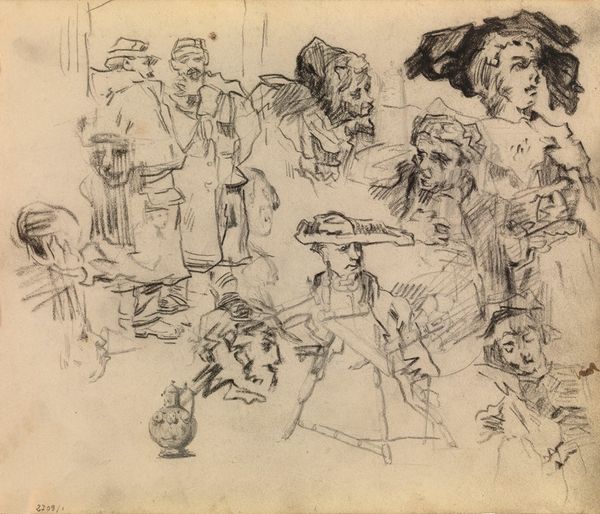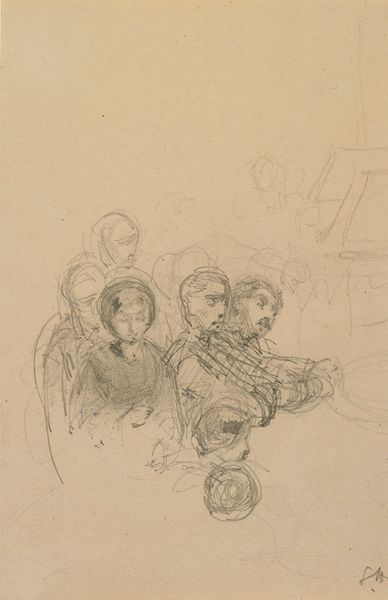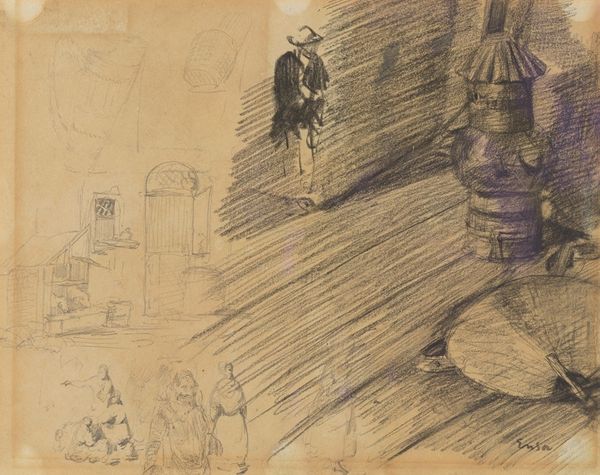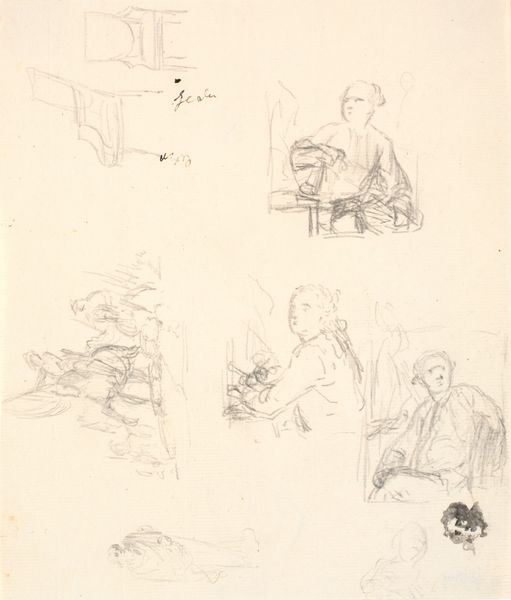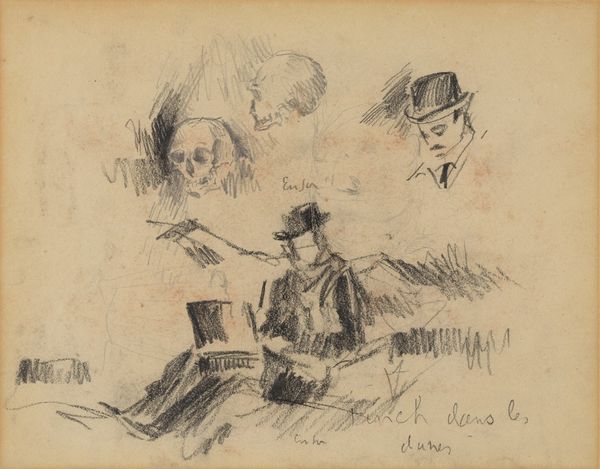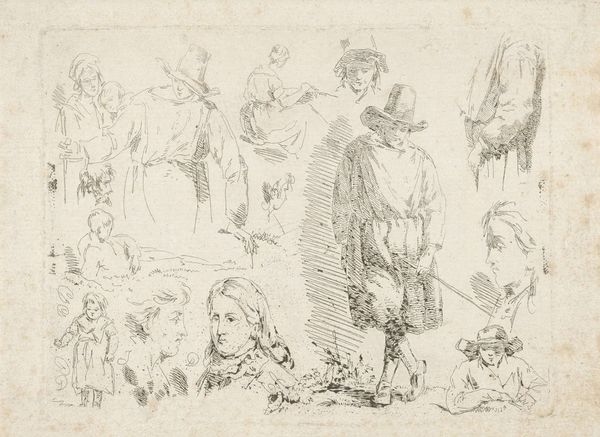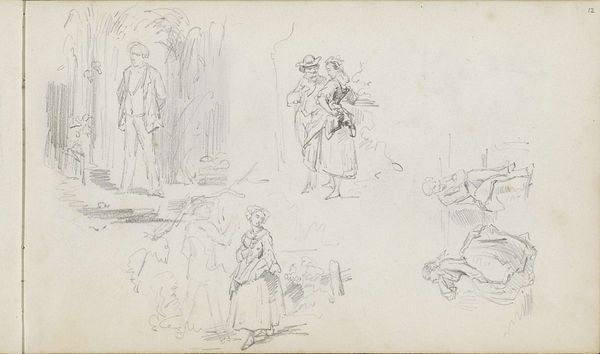
drawing, pencil
#
portrait
#
drawing
#
figuration
#
pencil
#
genre-painting
Copyright: Public Domain: Artvee
Editor: This is James Ensor's "Kop, schoteltje en figuren," created sometime between 1880 and 1885, a pencil drawing. It's quite a busy composition! So many figures, a cup, all sketched with evident speed. What strikes you about it? Curator: I'm drawn to the immediate nature of the medium. Pencil allows for rapid notation, a direct translation of thought onto paper. Notice the variations in pressure and the visible marks of the artist's hand; it exposes the labour and choices behind representation. Are we seeing studies, quick impressions before a more 'finished' work, or something intended as complete in itself? Editor: That's interesting, the idea of sketches versus a finished piece. So you see value in the process itself? Curator: Absolutely. The accessibility of the materials - paper, pencil - removes a layer of preciousness we often associate with 'high art'. Ensor is playing with the concept of value itself: What makes art 'valuable', the end product or the labor, the concept, the materials involved? How would these studies influence Ensor's known work? Editor: So, by examining the material reality - the simple pencil on paper - we can question these hierarchical distinctions? The idea of labor is a thread that might lead us to connect this to broader economic questions in 1880s Europe, perhaps? Curator: Precisely. It reminds us that art-making is a form of work, embedded within social and economic contexts. Consumption of cheap readily available materials. Ensor seems to implicate artistic practices with all the rest, drawing them into question, a question of value and materials. Editor: I never thought about art-making as embedded in such material concerns, this is incredibly enlightening! Curator: Indeed. Considering art through the lens of its production can radically alter our understanding and appreciation.
Comments
No comments
Be the first to comment and join the conversation on the ultimate creative platform.
